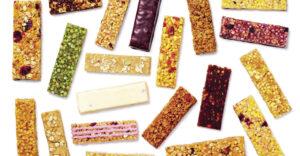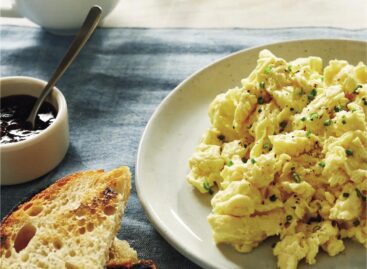Then the doctor came…
The Food and Agriculture Organisation of the United Nations (FAO) defines functional foods as those that provide specific health benefits beyond basic nutrition, including the prevention and treatment of illnesses – in a broad sense, we are talking about a myriad of modern products.
This article is available for reading in Trade magazin 2024/8-9
However, many people in the food industry have a narrower definition of the category, considering functional foods to be those that are fortified with nutrients offering health benefits: amino acids, vitamins, minerals, proteins, fatty acids, pre- and probiotics. The global market for these foods and beverages was USD 333.34bn in 2023 and is forecast to grow to USD 793.6bn by 2032.

Bars are one of the fastest growing segments of functional foods
At a global level three quarters of consumers think in the long term when it comes to health, citing gut health and digestion among the three most important areas of health. Probiotics – including fermented foods and drinks – have previously topped the list of gut-friendly foods, but fibre-rich prebiotics are just as important in maintaining a healthy microbiome. Experts predict that products containing prebiotics will be the new stars in the functional foods category in 2024-2025. Another trend in the category is to increase the protein content of products, which is no longer just an issue for wellness-oriented consumers. Plant-based ingredients and plant extracts are an excellent solution, not only in satisfying the need for protein, but also for higher vitamin and mineral content. //
We need protein!

Dr. László Vereczkei
head of product development
and licensing
BioTechUSA
In recent years several trends have emerged in the functional food category. Protein intake is becoming increasingly popular, as a growing number of consumers see protein as synonymous with healthy eating. Consumers have access to protein in three forms: powders, drinks and bars. Protein bars are dominated by trends favouring “clean” and “healthy” ingredients. Our group is currently developing a multilayer protein bar, filled with real chocolate. //
Good pricing is important

Andrea Salgó-Agócs
founding owner
Majomkenyér
There is a clear upward trend in the functional food category – both nationally and internationally. Consumers are becoming more conscious and their awareness is creating complex demands. However, in the face of inflation awareness also means financial consciousness on the part of consumers. We have decided to keep our prices close to what shoppers are used to as long as we can, so that our dedicated customers don’t have to give up buying the products they have grown to love over the years. //
Competition is intensifying

Anna Pókecz
marketing manager
Cerbona
In the past 18 months the biggest trends in functional foods have been the increasing demand for natural ingredients, the popularity of fibre-rich products, and the expansion of vitamin and mineral fortified foods. The consumption of functional foods is growing, but so many new products and brands are entering the market in this category that competition is intensifying. We have recently put several new gluten-free and sports products on the market. //
Popular high protein diets

Judit Tőzsér
head of corporate communications
Lidl Magyarország
Our company’s objective is to add new and innovative products to our portfolio. As a result of this, our private label high protein rice pudding was born. High protein diets have become popular in recent years, thanks in part to the fact that high protein foods and drinks increase the feeling of fullness, help to increase muscle mass during exercise, and assist in regeneration after training. In addition to its high protein content, the product is low in fat and contains no added sugar. //
Related news
Private labels make plant-based alternatives cheaper
🎧 Hallgasd a cikket: Lejátszás Szünet Folytatás Leállítás Nyelv: Auto…
Read more >One in five adolescents worldwide exhibits disordered eating behavior
🎧 Hallgasd a cikket: Lejátszás Szünet Folytatás Leállítás Nyelv: Auto…
Read more >Vegan scrambled eggs at 30,000 feet
🎧 Hallgasd a cikket: Lejátszás Szünet Folytatás Leállítás Nyelv: Auto…
Read more >Related news
Christmas shock in commerce: for the first time, we can pay with bank cards in fewer places
🎧 Hallgasd a cikket: Lejátszás Szünet Folytatás Leállítás Nyelv: Auto…
Read more >Hungarian Confectionery Manufacturers Association: trends in 2025 and prospects for 2026
🎧 Hallgasd a cikket: Lejátszás Szünet Folytatás Leállítás Nyelv: Auto…
Read more >Most grocery chains will be open until noon on December 24th
🎧 Hallgasd a cikket: Lejátszás Szünet Folytatás Leállítás Nyelv: Auto…
Read more >






